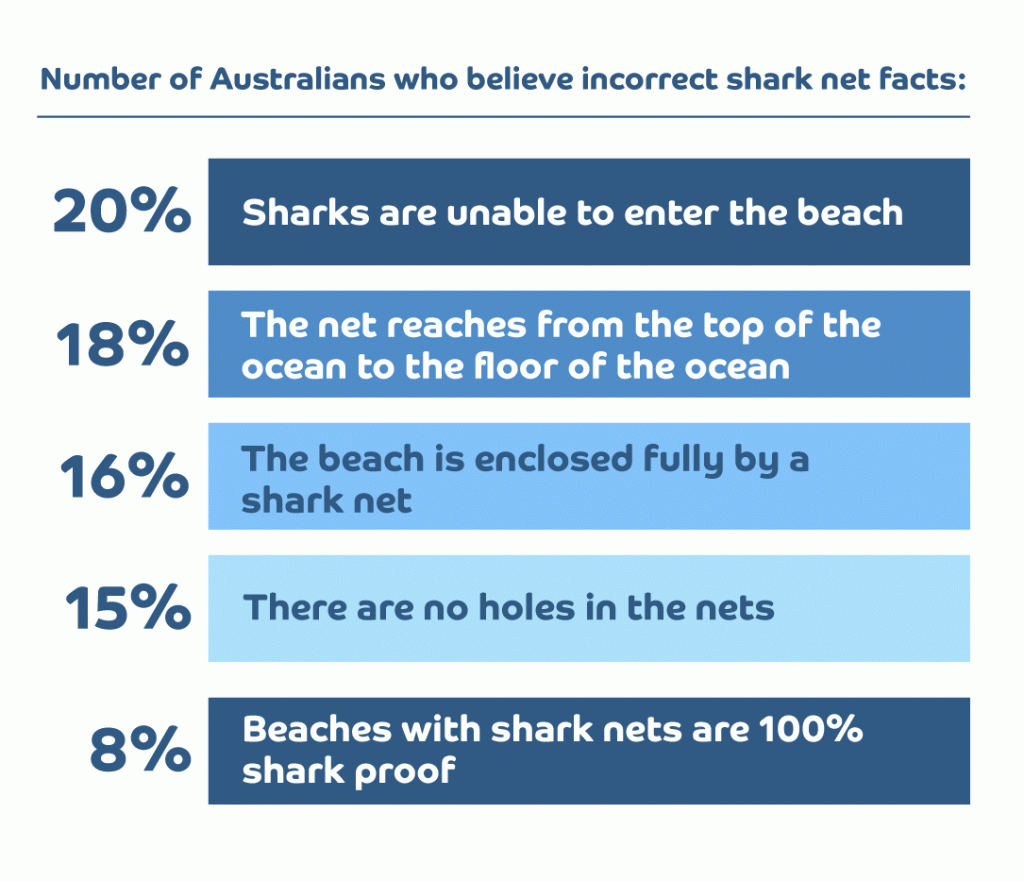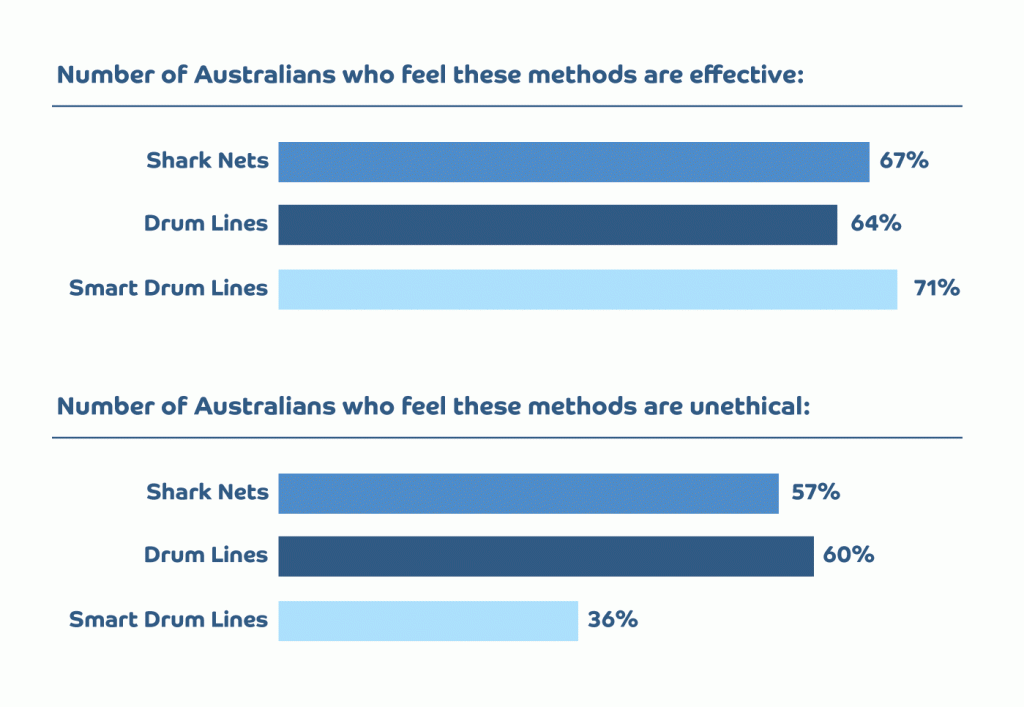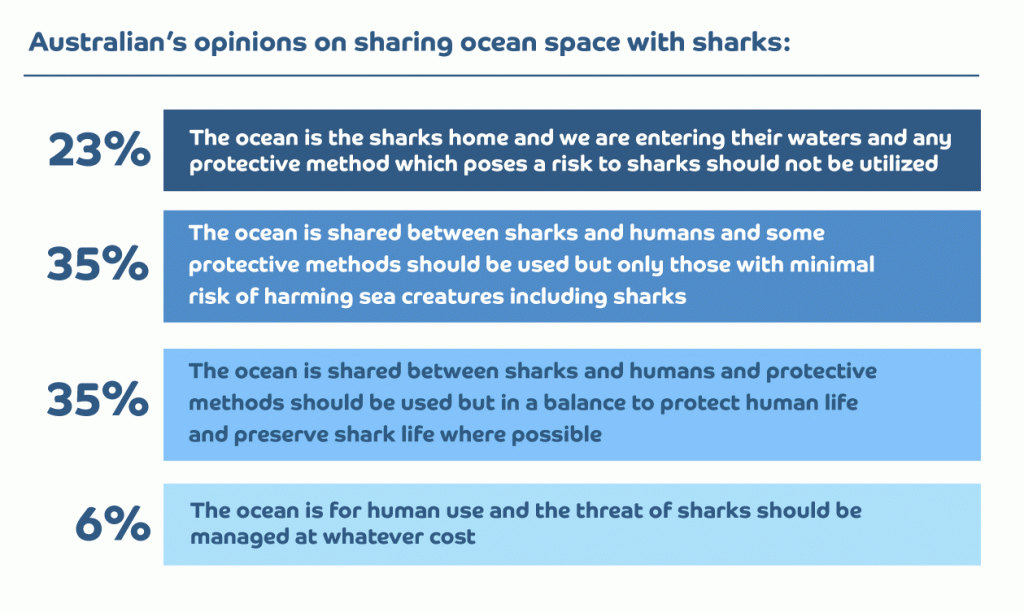Spending time at the beach is an integral part of Australian culture and lifestyle. Even those of us residing in the colder states or inland are likely to journey to the coast often. But Australia is as equally renowned for its beaches as it is for its dangerous wildlife, and shark-attack management has been a divisive issue across the country for decades.
With Summer only weeks away, Select Opinion Leaders sought to understand Australia’s 2021 standpoint on shark nets and alternative safety measures. Shark nets have been used in Australia since 1935, and 86 years on it feels like the national psyche around sharks is pulled between indifference and fear. Despite this, this national poll found many Australians are willing to reconsider the situation below the surface with empathy and the majority are likely ready for change.
Australians Love the Ocean but Does Our Sense of Safety Rely on Misconception?
Aussies love the beach – around 94% of Australians are beach-goers, with 43% of this group visiting at least a few times a year and 30% being regular or even daily users of our sandy shores. At the beach, swimming is one of our most popular activities (79% of beach-users enter the water while there), as well as a host of other water activities such as snorkelling (20%), body boarding (19%) and surfing (13%).
All this time in the ocean, but are Australians considering the risk of sharks when making the choice to share their waters? We found most Australians aren’t really thinking about it – when deciding which beach to visit, only 24% of Australian beach-users consider what shark control methods are used at those locations.
However, water safety in general is an important consideration for most, with over half of Australians only swimming or participating in ocean activities at patrolled beaches (55%). When prompted about whether they prefer to be in the water at beaches that have shark nets rather than not, 58% of beach-goers stated that yes, they would. But do Australians fully understand the effects of shark nets, to both their safety and to the environment?

Most Australians are Unaware of True Nature of Shark Control Methods…
In the past, advocates for the removal of shark nets have described a complacency effect – people are less likely to be aware and proactive with their own safety from sharks if they feel fully protected. This false sense of security stems from the misconception that shark nets act as a barrier and keep swimmers fully separated in their own private piece of ocean.
When we queried Australian beach-users on their perception of shark nets, only 61% were able to dispel the myths surrounding how they actually work. This left around four in ten Australians who when at the beach believe shark nets are doing something they’re not. One in five think that the use of shark nets means sharks are unable to enter the beach area (20%), and a similar number believe the nets reach from the surface of the water to the floor of the ocean.

Shark nets are designed not as a barrier but as a catching tool, trapping sharks in the netting. The nets don’t even reach far along the beach, usually only spanning 150 metres, and do not extend from the ocean floor to the surface.
The purpose of catching the sharks is to cut down the number of sharks in the area, reducing the risk for people, however many other wildlife lose their lives getting caught in the nets. When we asked Australian beach-users if they thought shark nets are used as a method of culling sharks, 70% answered no, they didn’t realise that was the case.
Common Shark Safety Measures Explained…
Australia currently utilises a variety of shark control methods, with multiple methods often in use at the same beach. These include the use of shark nets, drum lines, tracking migration patterns, watch towers, air watch management and patrolled beaches. The most commonly relied upon, as well as the most controversial, are the nets and drum lines.
Drum lines are similar to shark nets in their impact on sharks and other wildlife – they are an unmanned aquatic trap used to lure and capture large sharks using baited hooks. Like nets, these are checked regularly but the majority of the time the shark is dead or requires lethal force to remove it.
Nets and drum lines both have disputed effectiveness as well as ethical and environmental considerations. But now we have smart drum lines – designed to be non-lethal and to send an alert when a shark has been captured on the line. Once caught the animals are tagged and relocated offshore.
All of these techniques are expensive to run, and opinion on the most effective combination is varied. This is in part due to the data on shark attacks and control methods spanning nearly 80 years, with other factors playing a role in shark-attack survival rates (such as more efficient medical treatment after attacks).
Popular Opinion Suggests Technologically Advanced Methods are Best Way Forward…
We asked beach-users to rate shark nets and both types of drum lines in terms of how effective and ethical they believe them to be, as well as the sense of safety they provide. While shark nets provide a mental net of safety for 91% of beach users, drum lines only make 61% of people feel safe. The difference in these numbers however, is in part caused by the number of people who were unsure what the drum line method was or how it worked, with 30% expressing uncertainty or confusion on this.
The majority feel that shark nets are effective (67%), but nearly as many feel that drum lines were also effective (64%) and smart drum lines received the highest rate of perceived effectiveness from the public (71%). Smart drums also have the lowest rates of people who find the method unethical (only 36%, compared to 60% for standard drum lines and 57% for nets).
The smart drum seems to win the popular vote, outperforming the other main options in both perceived effectiveness and ethics. Combined with patrolling, which 94% of beach-users say makes them feel safe and 92% believe is effective as a shark control measure, smart drum lines could be the way forward.

Australians Ready to Re-align the Balance…
Shark nets have been around since 1935, with conflicting evidence on how effective they are. With advances in technology governments could be investing in new ways to minimize the risk of shark attacks at Australian beaches. Nine in ten Australians agree (89%), and most also feel that shark behavioural patterns should be taught in schools alongside other water safety topics such as rips (92%).
Educating the public on shark behaviour and control methods is a clear move forward – 90% of Australian beach-users think learning about this should come with the privilege of being a beach-user.
For 23% of Australian beach-users, the ocean is first and foremost, the shark’s home, and they feel that any protective method which poses a risk to sharks should not be utilized. For an additional 70%, the shared use of the ocean by humans and sharks needs some form of management to protect people but preserving shark life as much as possible and protecting other sea life is equally as vital.

The public is open-minded to alternative solutions in shark safety controls, and government are now presented with an opportunity – redistribute resources into more environmentally conscious approaches and re-align the balance between what nature gives to us and what we take from it.
